Back in May 2015 a Golden Nightjar was hit by a car and killed along the now-famous road between Dakhla and Aousserd, then representing the first record of this species in Western Sahara. It showed indications of being a breeding bird, thus the idea sparked that there may be a remote and small population in Western Sahara. Whether the bird was a regular or just a phenomenon induced by favorable weather or feeding conditions was unknown at the time. The discovery of this truly stunning nightjar obviously excited birders, for it suddenly seemed possible to connect with this species while picking up other local goodies, such as Cricket Warbler and African Dunn's Lark.
Then, for three years running from 2016-18, Golden Nightjar was found at Oued Jenna, a wadi interspersed with some high-standing trees some 20 km north-west of Aousserd. The species was both heard and seen here by a number of visiting birders, making it a real possibility to connect with in Western Sahara. However, the status of the species remained unclear: while there were indications of breeding, it couldn't be proven as eggs or juveniles were never observed. In the meantime, the first confirmed breeding record of Golden Nightjar for the Western Palearctic came in April 2018, when a nest with a single egg was found in northern Mauritania.
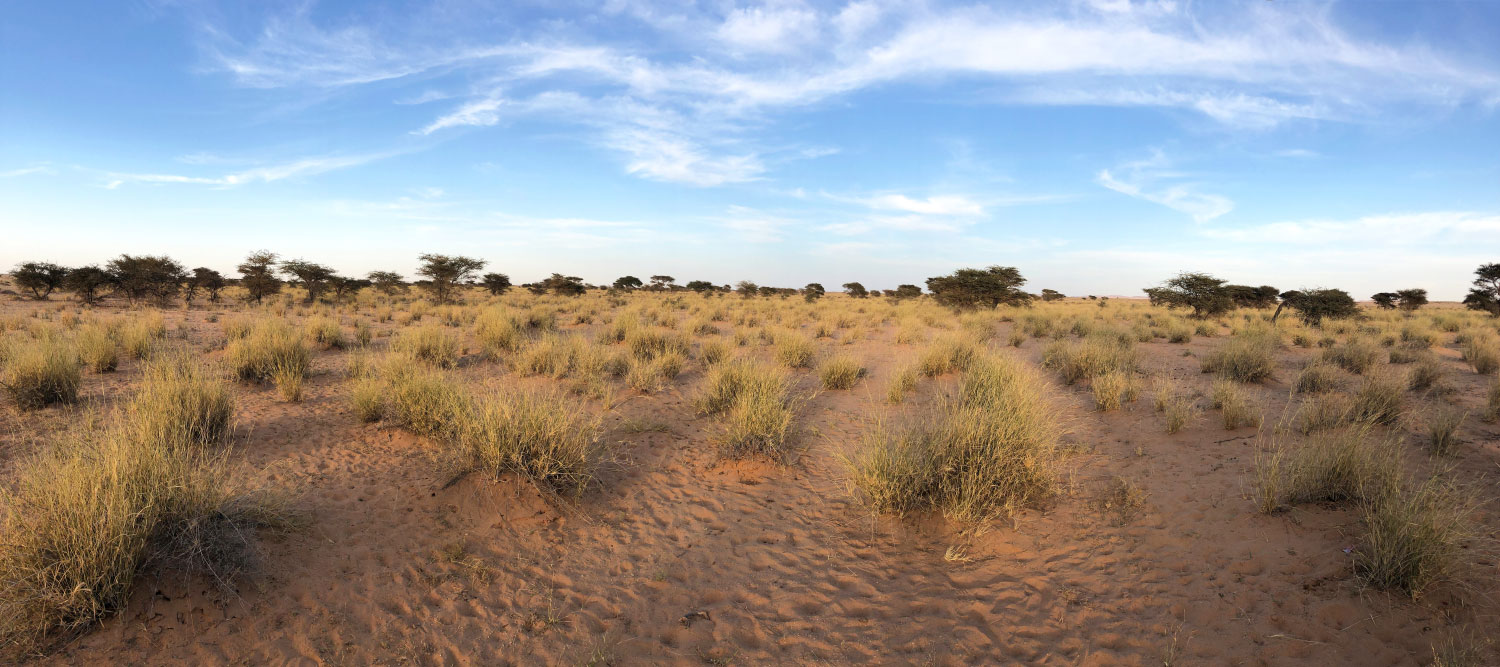
Typical Golden Nightjar breeding habitat in Western Sahara (Felix Timmermann).
I started planning a four-week stay in Morocco and Western Sahara in late 2018. It was my intention to drive into Western Sahara alone and try to connect with the targeted species. While the larks and other 'headline' birds seemed pretty straightforward, the nightjar required some positive thinking. By the time I arrived in Dakhla, no-one had yet seen the species at Oued Jenna in 2019 – this having been the only known location for it along the road towards Aousserd. I spent some days and nights fruitlessly searching and listening in the area, which was very dry and desolate this year. At that point, it seemed very unlikely that I was going to connect with the nightjar on my trip.
At noon on 19 March I came upon a group of German birdwatchers, who had been using a guide to maximize their chance of connecting with all specialties. While watching Black-crowned Sparrow and Dunn's Larks, they showed me photos of a bird they'd seen the previous night – it was indeed a Golden Nightjar, and with it were two chicks!
Excitement rushed through me, for suddenly it felt like I might see my main target after all, but this was quickly followed by disappointment – the site was in the middle of the desert some 40 km off the main Aousserd road. The location, which was provided by their guide from Gayuin Birding Tours, was clearly never going to agree with a two-wheel drive rental car – that was obvious even from Google Maps. I thanked the group for the information and left towards Aousserd.
The saying "go big or stay home" came to mind and temptation drew me off road and into the desert. I lost the phone connection after 5 km, scratched the car badly and finally couldn't continue past the 15 km point. Deciding that it simply couldn't be done with my car, I headed back and planned to ask around Aousserd until someone agreed to take me there. Halfway back to the road, I saw the oldest and coolest Land Rover I'd ever seen. There were three guys having tea in the shade, so I stopped the car and walked towards them. Lucky for me, they spoke English and immediately agreed to take me to the site! I was elated beyond belief. We hid my car, two of them got on top and I was seated on the passenger seat for the next three bumpy hours. We only stopped for some camel milk and arrived at the GPS position at around 4 pm.
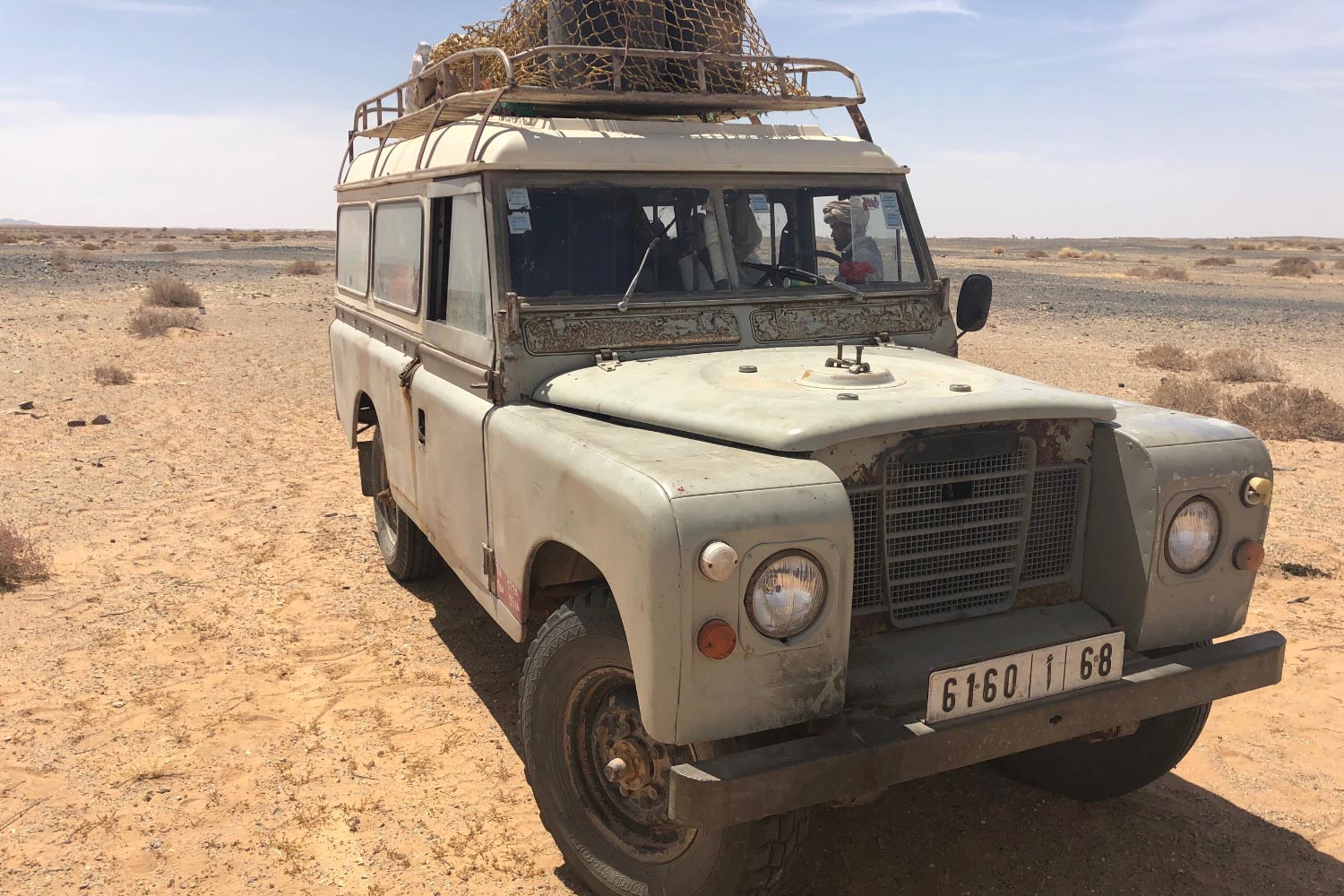
What a car to drive around the Sahara – reliability at its best!
While they set out to make a fire and prepare tea, I couldn't stop myself and headed into the wadi. It was much greener then Oued Jenna and had the usual birds: Desert Sparrows, Cricket Warblers, Fulvous Babbler and the odd Great Grey Shrike. Walking around carefully I scanned the trees trying to find those three that were standing close to each other, which was said to be nightjar location. After 10 minutes or so I became certain I was at the right spot, turned around and couldn't help but stare. There it was, sitting just 10 metres away – an adult Golden Nightjar roosting under a tiny patch of grass.
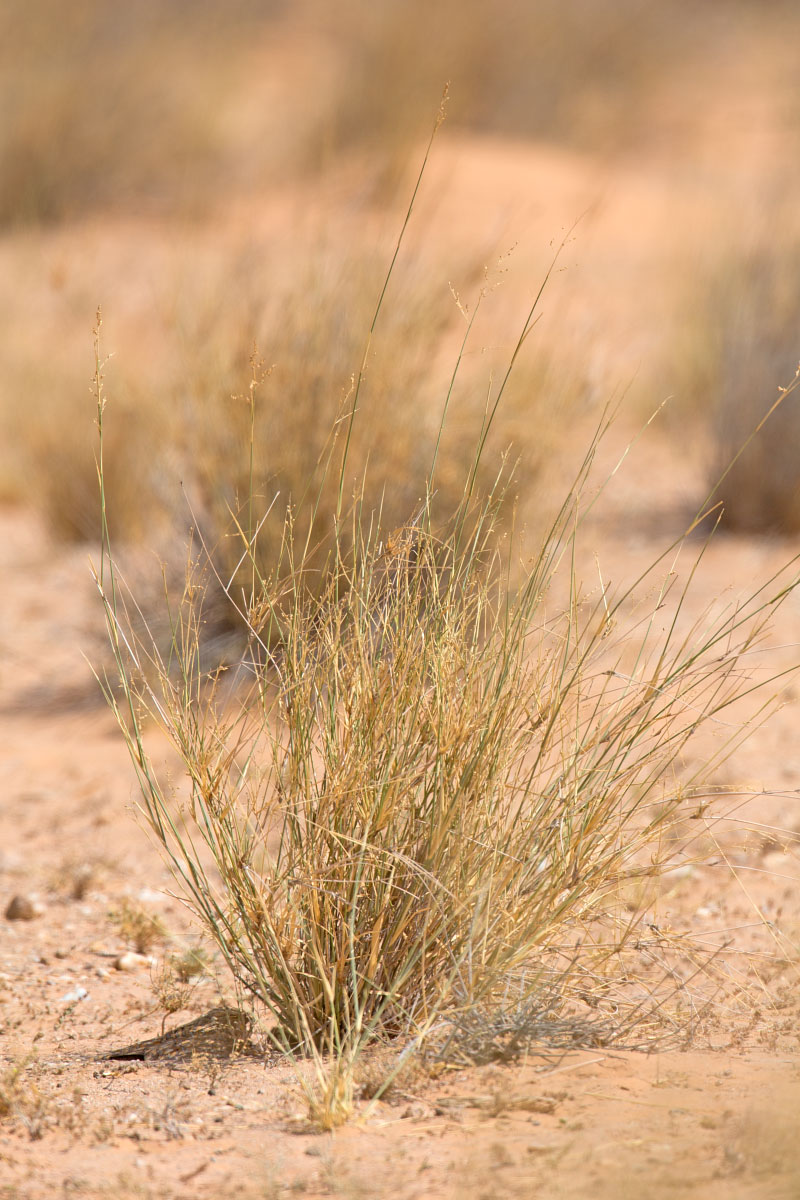
Female Golden Nightjar at roost in the afternoon heat (Felix Timmermann).
The chicks were sitting next to it in the sun, while the female was in the shade. I took some initial photos, admired the beautiful golden plumage and retreated in high spirits to some tea. I went back to the bird three times, leaving it alone for periods of at least an hour. Each time I went there, the chicks had shifted: sitting next to the female, right on the other side of the bush of grass and once under her wings. The roost was near trees of up to five metres in height, with sandy ground and interspersed grassy bushes.
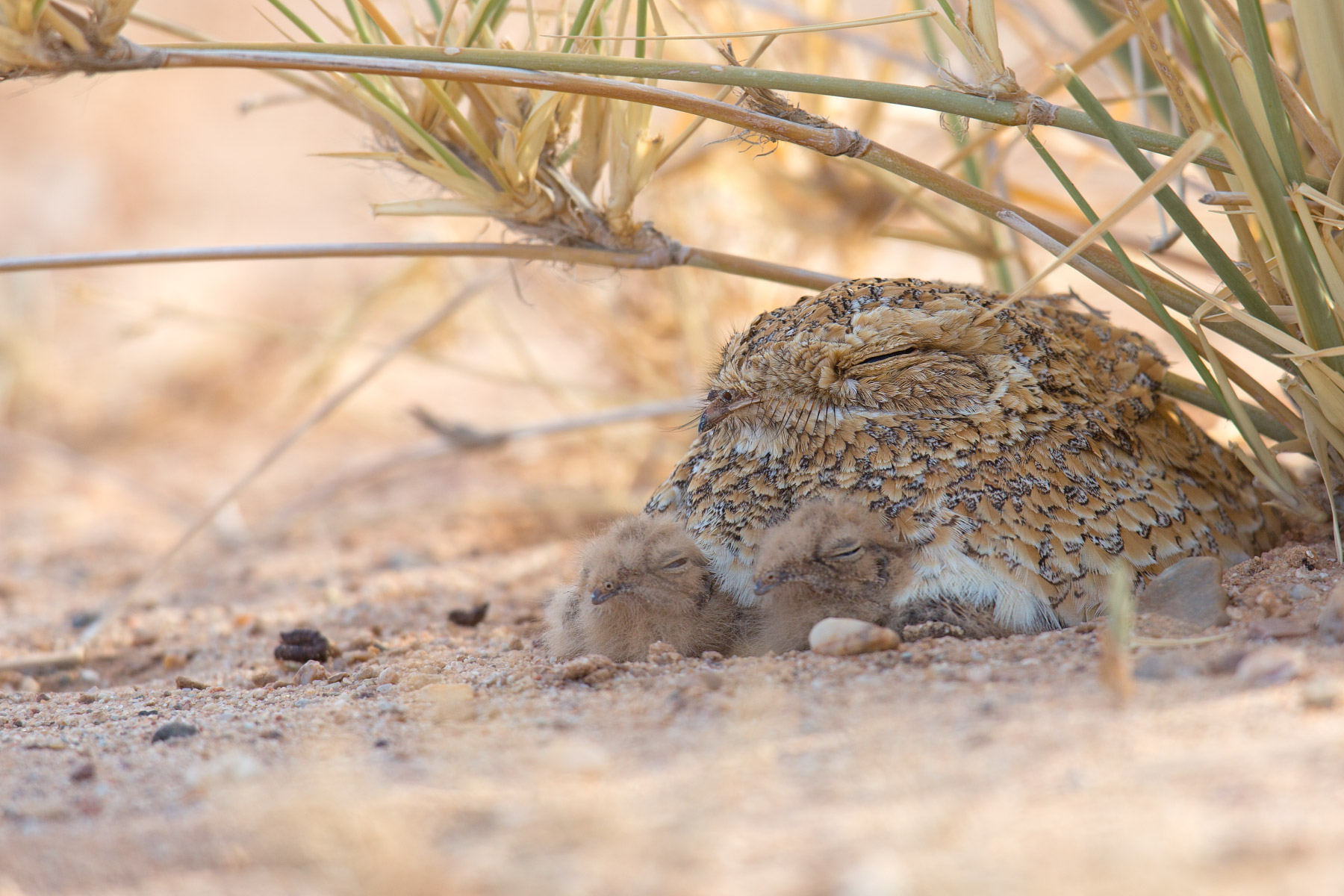
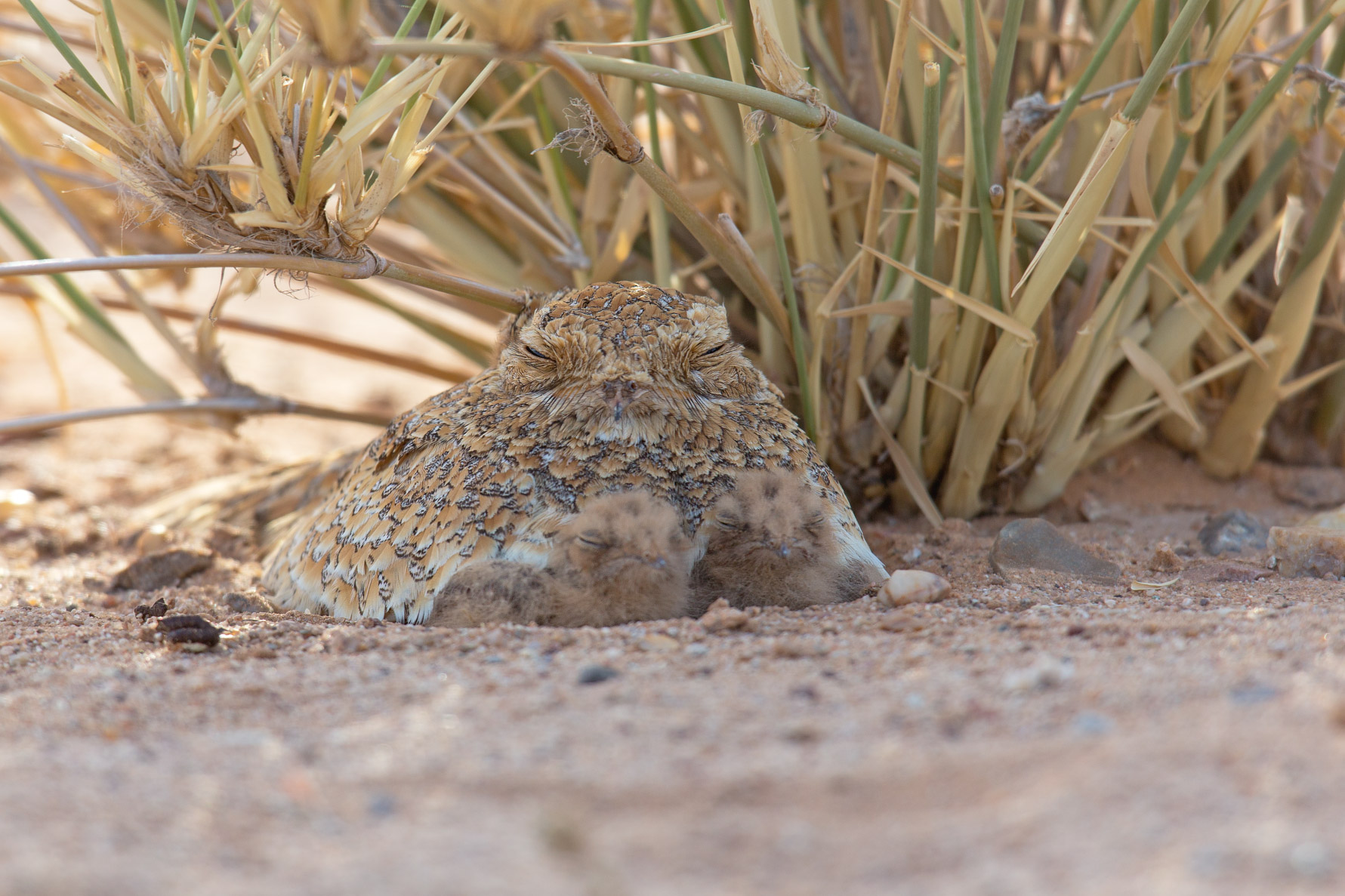
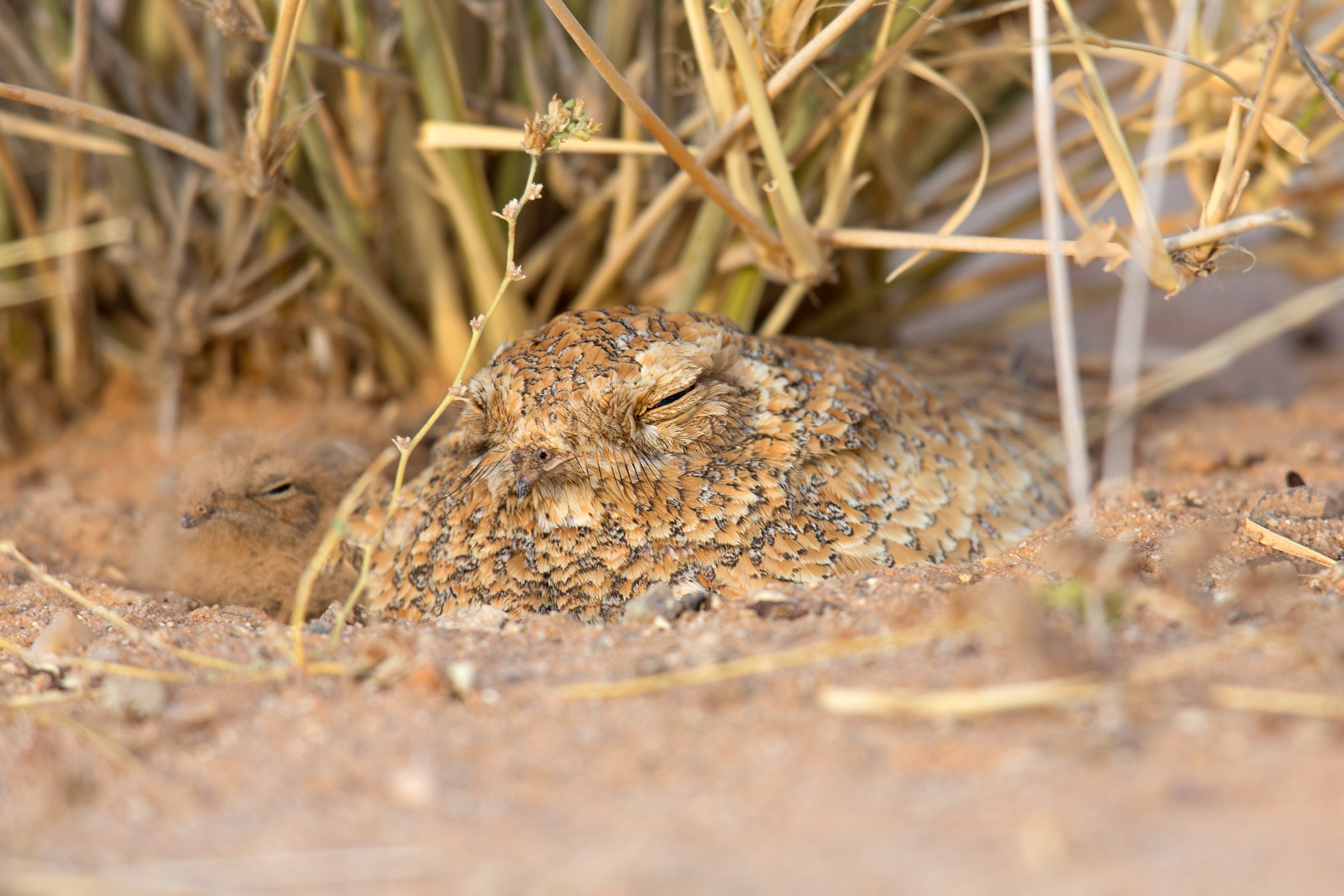
Female Golden Nightjar with chicks, Western Sahara, March 2019 (Felix Timmermann).
After we ate an evening meal of lamb by the fire, I set out for one final visit: the sun was setting and we were already packing things back up in the car. The female was again separate from the chicks; she started to open her eyes a fraction and bob her head while giving soft calls. I took some final pictures and left them to it.
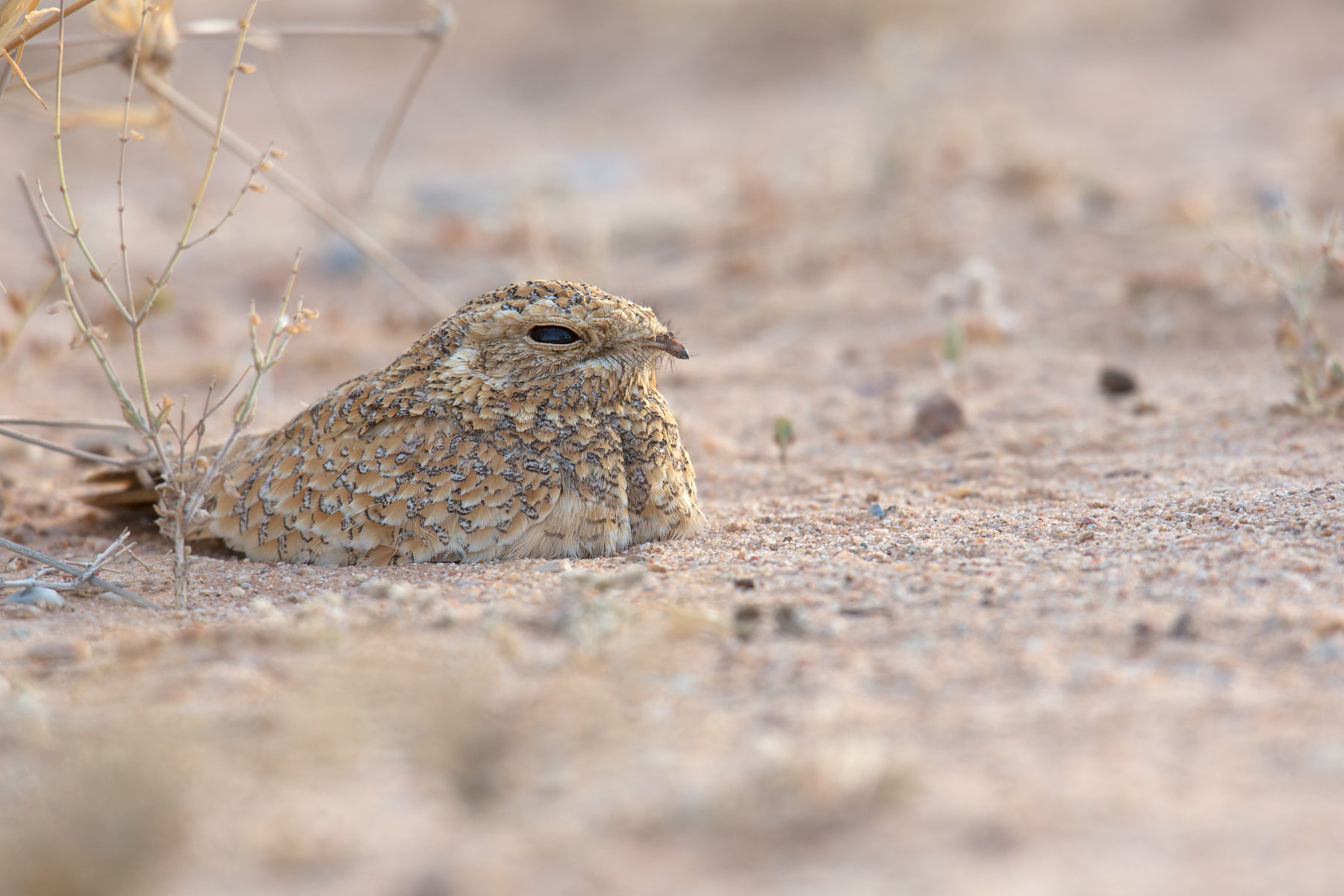
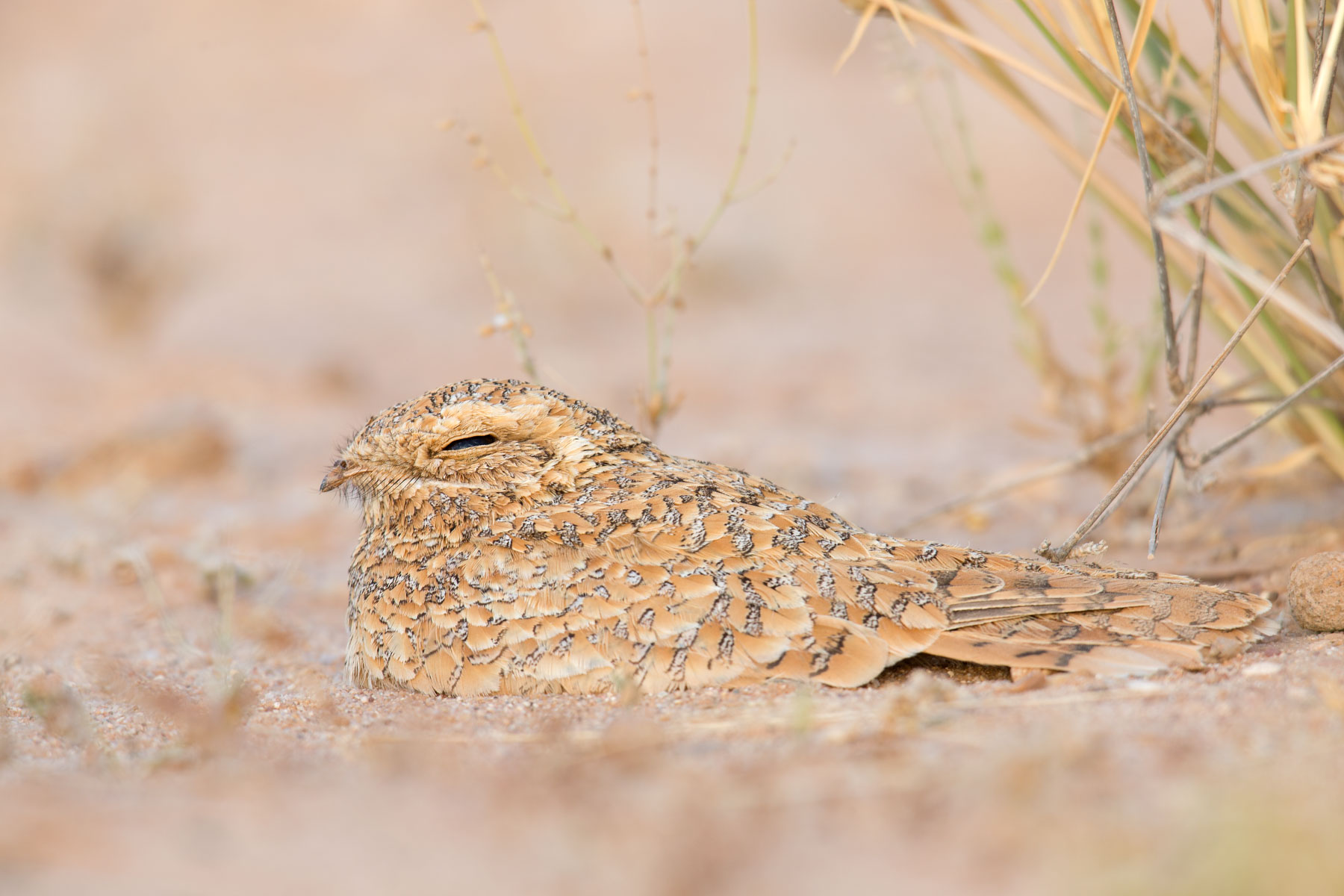
The setting sun made the beautiful plumage tones really stand out (Felix Timmermann).
In the dark it took over three hours to get back to my car, which to my relief was exactly where I had parked it. My companions were gold prospectors and actually gave me some gold encased in sandstone, so I thanked them in return by giving them a pyrite crystal I had bought in the Atlas Mountains the week previously. We exchanged telephone numbers and I hope they will have a chance to read this. This day, the bird and people will always stay in my mind.
This spring, then, Golden Nightjar has finally been proven to breed in the Western Sahara. Since then the site has been visited by a number of birders and the two chicks are in good health and have started flying. Where else these beautiful birds occur in the Western Sahara and perhaps even Morocco, time will tell.
No comments:
Post a Comment